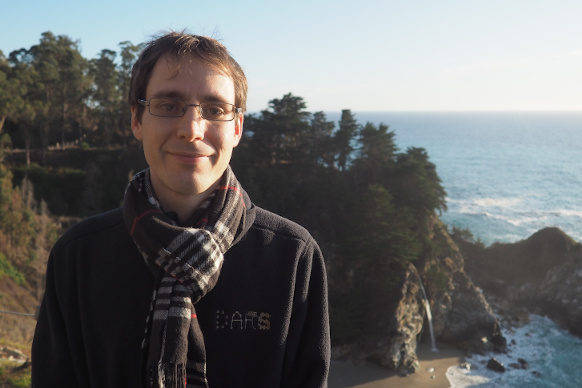Hi, fellow Crayzflie’ers! I am Wolfgang Hönig and I am a visiting researcher at Bitcraze until early April. I am excited to be part of the team and will be working on making the Crazyflie (and its ecosystem) even more accessible, more robust, and versatile for other researchers and users.

I started working with the Crazyflie (1) back in 2014 as preparation for grad school. It was the only affordable, small, and open-source robot that I could find and helped me a lot to gain practical knowledge for controls, state estimation, and realtime systems. Now, 7 years later, it is still an exceptional product for the same reasons. During my PhD at the ACT Lab at the University of Southern California, I developed crazyflie_cpp, crazyflie_ros and, together with James A. Preiss, the Crazyswarm. The Crazyswarm in particular has helped me (& many other researchers) to validate robotics research (I worked mostly on multi-robot motion planning). After my PhD, I joined ARCL at Caltech as a postdoctoral researcher, where we used the Crazyflies for research in novel techniques that combine machine learning, motion planning, and controls (see GLAS and Neural-Swarm). Starting May 2021, I’ll be leading my own research group at TU Berlin.
At Bitcraze, I am looking forward to a close collaboration with the team. So far, we are planning to improve the low-level communication over the radio (joint work with Arnaud) and data collection and improvements to the state estimator by using the unique flight arena that has a motion capture, Lighthouse, and Loco Positioning system (joint work with Kimberly). If you are a researcher and have any other ideas, feel free to reach out via email or a comment!
Cogratulations!
It would be awesome if you enable the mesh localization in the Loco Positioning System. By this way, any two LPS node or deck should be able to measure the distance without need of third one (like initiator anchor 0).
This would open a way to implement anchor auto positioning, e.g. with Multi Dimensional Scaling.
I was trying to establish a TWR between any of the two points (lps node – lps node // lps deck – lps deck // lps node – lps deck) , but clearly there is a need for custom communication protocol.
Besides that, you can exploit the DWM1000’s communication stack to stream camera data from AI deck to the LPS nodes.
I think these are the two essential studies regarding to low level communication protocol.
Hi ONG!
There is some work ongoing for inter ranging between Crazyflies in https://github.com/bitcraze/crazyflie-firmware/pull/656, https://github.com/bitcraze/crazyflie-firmware/pull/655 and https://github.com/bitcraze/crazyflie-firmware/pull/580. Hopefully it will also include mixed mode of TWR and TDoA.
Hi all, I first want to congratulate Wolfgang. As a researcher using Crazyflie, the news about inter ranging between Crazyflies are quite exciting to hear. The integration of this feature with possible P2P communication (the radio comm or through the AI decks) may open so many doors for swarm intelligence applications. One suggestion I might come up with regarding the scalability for the inter ranging. 4 or 5 CF can of course validate so many things but higher numbers are always facinating :) I look forward to hear more about this subject and more.